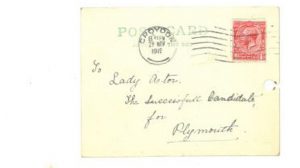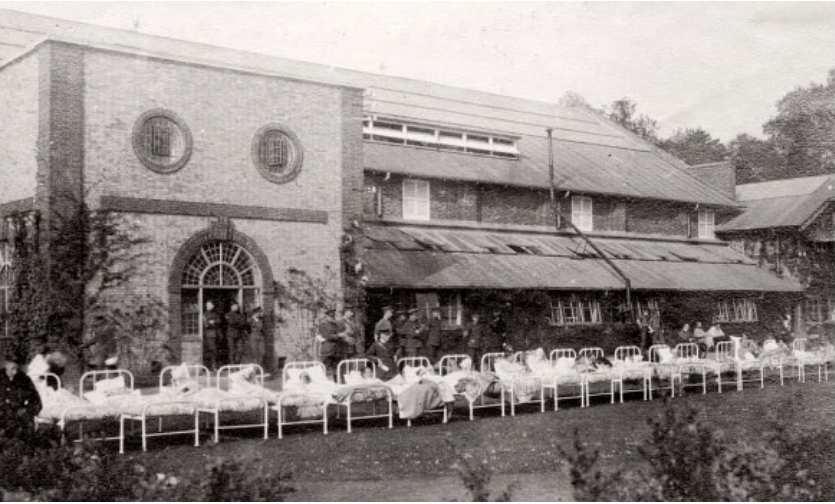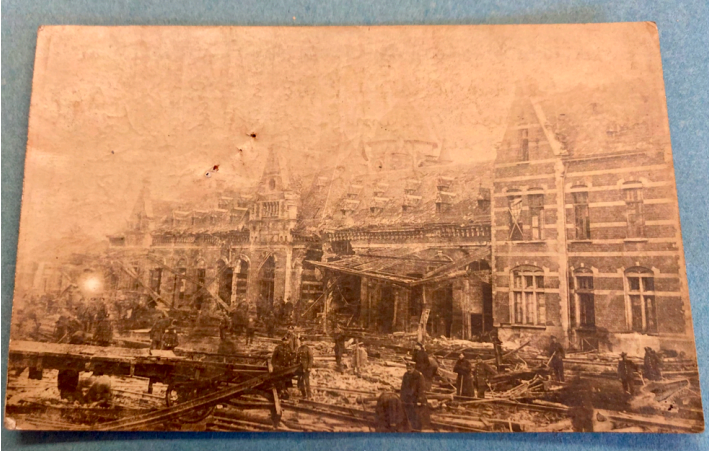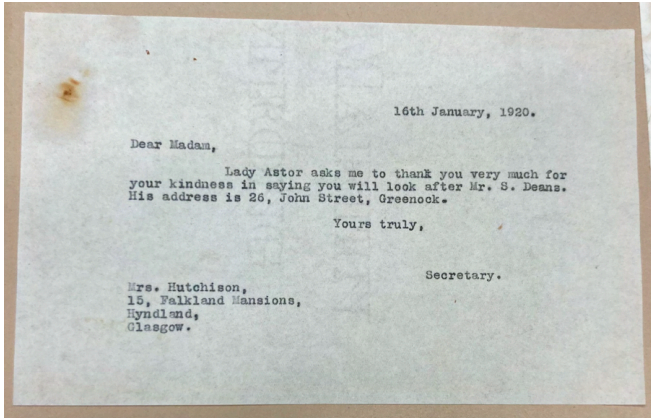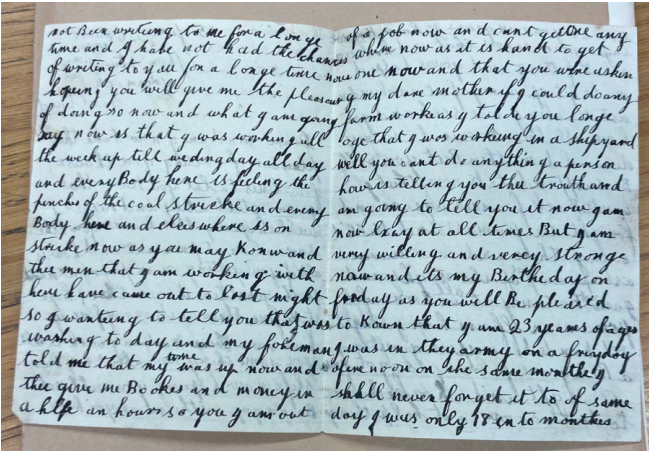Besides taking her seat in Parliament as the MP for Plymouth a year after the close of the First World War, Nancy Astor is not often conflated with the period of the First World War and the immediate period following it. There is, however, a discernible nexus between Astor and the First World War and its aftermath, which stems from her engagement and subsequent correspondences with soldiers who had once been hospitalised at the Canadian built HRH Duchess of Connaught Hospital at Cliveden as well as from her correspondences with veterans of the war who were not patients at Cliveden. These correspondences evince many interesting tidbits about a number of soldiers’ lives. They also evince the philanthropic endeavours of Astor which were geared towards veterans of the First World War.
One of these World War One ‘tommies’—or in his case, ‘Jocks’—who maintained a correspondence with Nancy Astor for almost four years was Scotsman private Samuel Deans. He served in the Seaforth Highlanders corps and later—after being hospitalised at Cliveden and meeting Astor—in the 296th Reserve Labour Company division under the British Expeditionary Forces (B.E.F.), which was a subbranch of the British Army that was deployed to the Western Front during the First World War and which itself assimilated various other military units. Deans’ correspondences with Nancy Astor will be the focus of this image gallery. Through these manuscripts we not only get to know Deans by learning about his experiences of serving abroad or his precarious existence upon his return home, but we also are able to get to know the ‘soldier’s friend’ side of Nancy Astor.
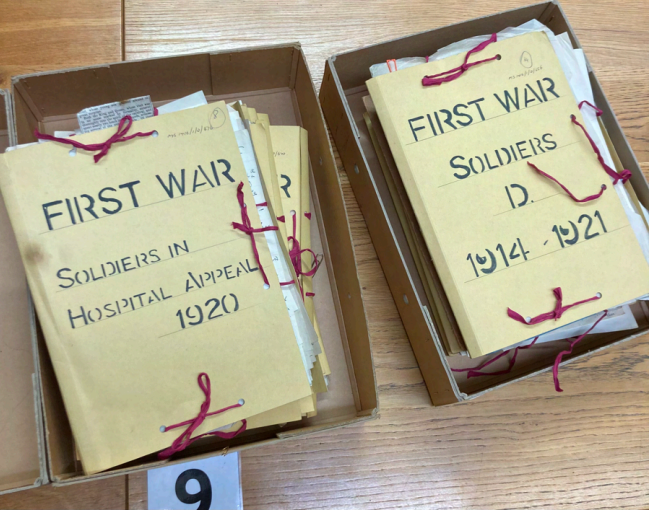 Some of the folders pertaining to Astor’s correspondences with
Some of the folders pertaining to Astor’s correspondences withand about First World War soldiers and veterans
The first letters between Deans and Astor which appear in the collection stem from early 1918. Writing from the Scottish Command Labour Center where soldiers’ deployment overseas was processed, Deans sends Astor two letters telling her that he is unfit for service overseas and asks her if she could employ him at Cliveden and if so to write to his commanding officer so he could escape being sent abroad to fight. On the 5th of February 1918 Captain R. Whiteford—Deans’ commanding officer— writes to Astor that he received her wire (which is unfortunately not in the collection) and regrets that Deans has already been sent overseas to France.

a fine application for me on you’re estate’

again…They have picked me for a draft again and
my father is dead four weeks ago and my mother
said if you go out again you will break my heart
for she give her third son to go and fight the
Germans’
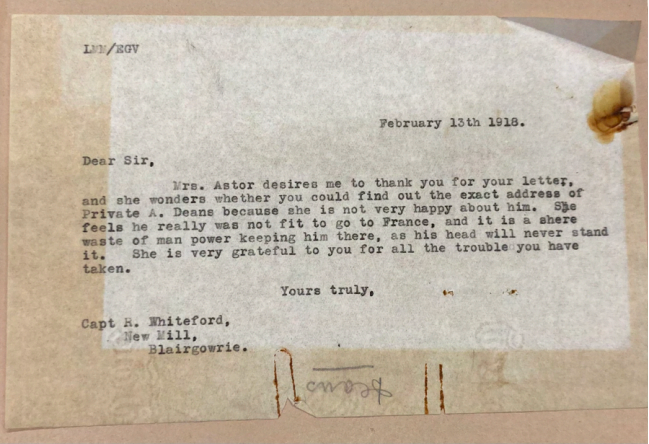
is ‘not very happy about him [Deans], as she [Nancy Astor] feels he
really was not fit to go to France’ and that Astor believes ‘his head will
never stand it’
When Deans eventually returned home to the parlous economic state and housing crisis which beset Britain, he wrote to Astor asking for her help in finding employment—as did many other soldiers in this collection.

you a hand to win the election at Plymouth (better
luck next time)’

than me now who are waiting on homes…I am
fed up…I want to get a home for good…would
you kindly take the pleasure of finding me a job
for when I come back home to civil life’
An undated letter—most likely from shortly after the war had ended—to Astor reveals that Deans had briefly worked in Scotland with the 25th Labour Company rebuilding Auchenmade Station.
In December 1919, a Glaswegian woman by the name of Mrs. Hutchinson takes an interest in Samuel Deans promising to try and help him as best as possible. Mrs. and Mr. Hutchinson invited Deans to dinner, made him a pecuniary gift, and planned on visiting him in Greenock, where he had worked in a shipyard for a while. Writing to Astor, Deans thanks her for introducing the Hutchinson’s to him and also states that:
Mr. Hutchinson is very kind to me you know and said he would give me anything I wanted question is what I want is this much I am looking out for a good job in the country plenty of hand graft and plenty of fresh air and plenty of cash but its not here at all for me I never smoke and I don’t drink at all nor do…I have any bad habits at all so I would like very much if I could get a job out in the open country
After not hearing from Deans for over a year, Astor receives a letter from him in June of 1921. Deans reveals to Astor that he wishes he could go on holiday and see her again as he has been working since he was a child and that he has not had a proper holiday. In another letter from June of the same year, Deans writes that he is out of a job at the shipyard and working at a farm in the Highlands as well as of his experiences fighting against the Germans in France.


At the end of 1921 and longing for an open air life, Dean’s becomes an itinerant in search of work which would accommodate this. In an act evoking a somewhat risible scene, Deans starts walking from Scotland in November of 1920 to visit Nancy Astor after making multiple entreaties to work at Cliveden This is where the correspondences in the collection between Deans and Astor come to an end and where we are left with the lacunae in Deans’ story.
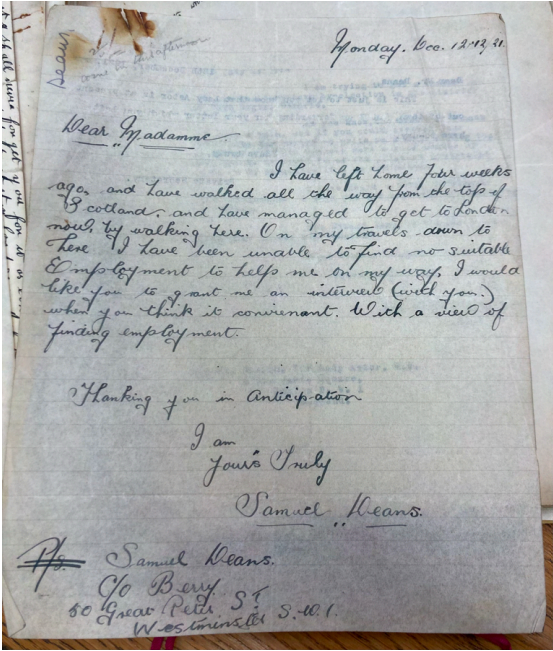

The manuscripts in this sub-series of the Nancy Astor collection help to uncover a lesser known facet to Astor’s personal and political life from before and just after she became a MP. They are also particularly useful for illuminating the lives and often the accompanying hardships faced not just of the soldiers of the B.E.F,. such as private Samuel Deans, but also of the many and varied other military personnel featured in this sub-series of manuscripts. The manuscripts may therefore be of special interest to historians researching the lives of Commonwealth soldiers during the First World War and inter-war period as well as to researchers interested in Nancy Astor’s interactions with the Tommies of the First World War.
The Nancy Astor collection housed at the University of Reading’s special collections boasts a panoply of personal correspondences between Lady Astor and important public figures, royalty, and all the way through to the ordinary citizenry. The sub-series within the Nancy Astor collection of the correspondences between her and veterans of the First World War comprises a physical extent of 24 files, spanning from 1914 to 1922 and encompassing correspondences from soldiers with surnames corresponding with almost every letter of the alphabet. Like that of private Samuel Deans, many interesting stories within this series await uncovering.
The series reference for the folders containing Nancy Astor’s correspondences with World War One military personnel and patients at HRH Duchess of Connaught Hospital, as well as those correspondences pertaining to the Soldiers in Hospitals Appeal is: MS 1416/1/2/653-676; the single reference for the folder containing private Samuel Deans’ correspondences with Nancy Astor is:MS1416/1/2/656
Noah Strauss is an undergraduate History student at the University of Reading.
All comments and opinions presented in this article are that of the author.
We have made every effort to abide by UK copyright law but in the instance of any mislabelling of images, please contact the author of the blog post. Many thanks to the University of Reading Special Collections for their permission to reproduce the above images.

